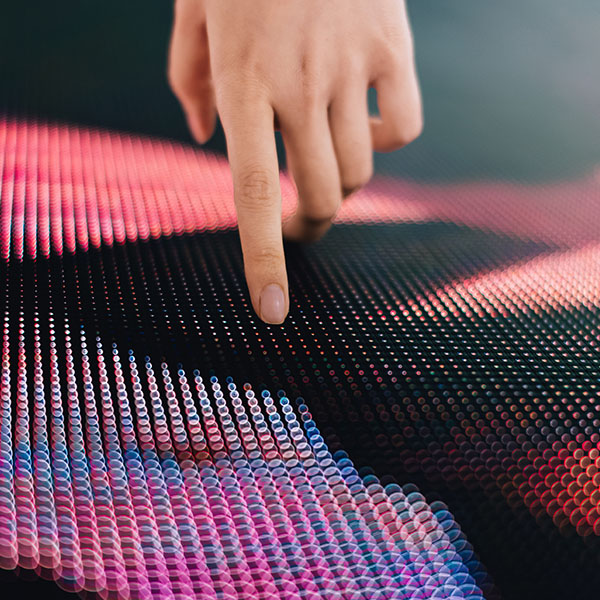Alternative methods to pneumatic systems for particle jamming to generate simulated hardness in haptic devices. Utility in applications requiring tactile feedback, such as virtual/augmented reality (VR/AR), medical simulation, and robotics.
Proposed Use
- Enhance consumer haptic devices, particularly in VR/AR headsets, by offering cost-effective tactile feedback solutions.
- Improve medical training and teleoperated surgical systems by simulating tissue textures.
- Reduce manufacturing costs for haptic devices, with applications in gaming, training simulators, and robotic control.
Problem Addressed
Current haptic devices using pneumatic particle jamming are expensive, bulky, and noisy, limiting consumer accessibility and scalability. This invention addresses these issues by providing non-pneumatic methods, making haptic technology smaller, quieter, and more affordable, with approximate cost savings from £400 to £10 per unit.
Technology Overview
This invention introduces four non-pneumatic methods for actuating particle jamming in haptic devices, enabling cost-effective and compact solutions for tactile feedback. These approaches eliminate the need for traditional pneumatic systems, using mechanisms such as piston-driven compression, motor-driven twisting, magnetic field-based compaction, and electric current-induced particle jamming. Prototypes of the piston- and motor-driven methods have demonstrated effectiveness in creating variable hardness, while the magnetic and electric methods offer innovative potential for further exploration. By replacing bulky, noisy, and expensive pneumatic components, this technology significantly reduces the size, noise, and cost of haptic devices. It provides a scalable, versatile platform for applications in virtual reality, augmented reality, medical simulation, and robotics, paving the way for accessible and high-fidelity tactile feedback in consumer and professional settings.
Benefits
- Cost-efficient: Reduces unit cost significantly, enabling broader market adoption
- Compact and lightweight: Eliminates bulky pneumatic components, allowing integration into consumer devices.
- Scalable: Supports complex, multiplexed haptic grids with minimal additional cost.
- Versatile applications: Suitable for gaming, VR/AR, medical training, and robotics.
- Quieter operation: Eliminates noise associated with vacuum pumps.
Intellectual property information
UK Priority Application – GB2404756.5 – Haptic Interface Apparatus
Inventor information
Dr Joshua Brown – Brown is an engineer and researcher working at the intersection of robotics, human-computer interaction and medicine. He is currently with the Department of Surgery and Cancer as part of the Centre for Engagement and Simulation Science and SiMMS research group.
Prof Fernando Bello – Bello is a computer scientist and engineer working at the intersection of medicine, education and technology. He is currently Professor of Surgical Computing and Simulation Science with the Department of Surgery and Cancer, where he is Director of the Centre for Engagement and Simulation Science, leading the Simulation and Modelling in Medicine and Surgery (SiMMS) research group. A multi-disciplinary research group aiming at building suitable models and simulations of clinical processes, including clinical examination, clinical diagnosis, interventional procedures and care pathways.

